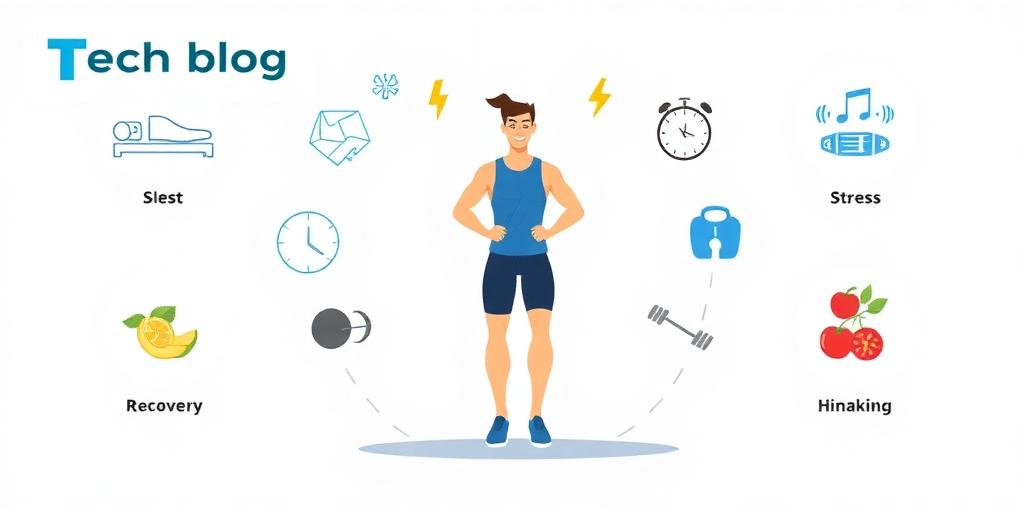Preventing Burnout and Overtraining Injuries
Burnout and overtraining injuries are significant concerns for athletes, fitness enthusiasts, and anyone pushing their physical limits. Understanding the causes, recognizing the symptoms, and implementing preventative strategies are crucial for maintaining long-term health and performance. This article provides an informative overview of burnout and overtraining, offering practical steps to avoid these pitfalls.
Understanding Burnout and Overtraining
Burnout is a state of emotional, physical, and mental exhaustion caused by prolonged or excessive stress. In the context of physical activity, it often results from an imbalance between training demands and recovery.
Overtraining occurs when an individual trains beyond their body's ability to recover. This can lead to a variety of physiological and psychological symptoms, increasing the risk of injury and reducing performance.
Causes of Burnout and Overtraining
Several factors contribute to burnout and overtraining:
- Excessive Training Volume: Doing too much, too soon, without adequate rest.
- Lack of Recovery: Insufficient sleep, poor nutrition, and inadequate rest days.
- High-Intensity Training: Constantly pushing at maximum effort without variability.
- Psychological Stress: Stress from work, relationships, or other life factors.
- Monotony: Repetitive training routines that lack variety.
- Unrealistic Expectations: Setting unattainable goals and feeling pressure to achieve them.
Recognizing the Symptoms
Identifying the symptoms early can help prevent severe consequences. Common signs include:
- Persistent Fatigue: Feeling tired even after rest.
- Decreased Performance: A noticeable decline in strength, speed, or endurance.
- Increased Injury Rate: More frequent injuries, such as muscle strains or stress fractures.
- Mood Disturbances: Irritability, anxiety, or depression.
- Loss of Motivation: Reduced enthusiasm for training.
- Sleep Disturbances: Difficulty falling asleep or staying asleep.
- Appetite Changes: Loss of appetite or changes in eating habits.
- Elevated Resting Heart Rate: A higher than normal heart rate when at rest.
Strategies for Prevention
Preventing burnout and overtraining involves a holistic approach that considers both physical and mental well-being.
Proper Training Plan:
- Progressive Overload: Gradually increase training volume and intensity.
- Periodization: Divide training into cycles with varying levels of intensity and volume.
- Rest and Recovery: Incorporate rest days and active recovery sessions into the schedule.
Adequate Nutrition:
- Balanced Diet: Consume a well-rounded diet with sufficient carbohydrates, proteins, and fats.
- Hydration: Stay adequately hydrated, especially during and after training.
- Nutrient Timing: Optimize nutrient intake around workouts to support recovery.
Sufficient Sleep:
- Consistent Sleep Schedule: Aim for 7-9 hours of quality sleep each night.
- Sleep Hygiene: Create a relaxing bedtime routine and optimize the sleep environment.
Stress Management:
- Mindfulness and Meditation: Practice mindfulness techniques to reduce stress.
- Relaxation Techniques: Incorporate activities like yoga, deep breathing, or massage.
- Time Management: Organize your schedule to reduce feelings of overwhelm.
Variety in Training:
- Cross-Training: Engage in different types of activities to work different muscle groups.
- Active Recovery: Include light activities like walking or swimming on rest days.
- Change of Scenery: Vary the training environment to maintain interest and motivation.
Listen to Your Body:
- Monitor Symptoms: Pay attention to physical and mental cues that may indicate overtraining.
- Adjust Training: Modify the training plan based on how you feel.
- Seek Professional Advice: Consult with a coach, trainer, or healthcare provider if needed.
Recovery Techniques
If you suspect you are experiencing burnout or overtraining, implementing recovery techniques is essential.
- Active Recovery: Light exercise to promote blood flow and reduce muscle soreness.
- Massage: Helps to relieve muscle tension and promote relaxation.
- Cold and Heat Therapy: Ice baths or contrast baths to reduce inflammation.
- Rest and Sleep: Prioritize sleep and minimize stressors.
- Nutrition: Focus on nutrient-rich foods to support recovery.
Conclusion
Preventing burnout and overtraining injuries requires a comprehensive approach that includes proper training, nutrition, sleep, and stress management. By understanding the causes and symptoms, and implementing preventative strategies, athletes and fitness enthusiasts can maintain their health, performance, and enjoyment of physical activity. Listening to your body and seeking professional advice when needed are also crucial steps in ensuring long-term well-being.









